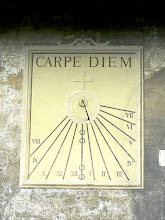HIDEO ITOKAWA, Aeronautical Engineer
.gif)

PHOTOS: Prof. HIDEO ITOKAWA, 1913-1999
(Image Courtesy of J A X A)
and News-article of his Rokcet
______________________________________
HIDEO ITOKAWA, AERONAUTICAL ENGINEER
born in Tokyo 1913, died in Nagano 21-2-1999
============================================
ONE OF Japan's most lovable eccentrics was a multi-talented aeronautical engineer, Hideo Itokawa.
He was a leading figure in the research into and development of the Japanese space programme and was popularly known as "The Father of the Space Rocket".
Like many mathematicians and scientists, he was a passionate lover of the arts, and was a gifted musician who gave professional performances on the cello.
He also played the violin, and even invented his own type of instrument.
He adored opera, drama and classical ballet, a discipline he revered so much that he began taking lessons in it at the advanced age of 60.
As an aeronautical engineer, Itokawa was best known for his wartime work in the production of fighter planes.
When he was just a schoolboy, he had been deeply impressed by Charles Lindbergh's feat in making a non-stop flight from New York to Paris in the Spirit of St Louis in 1927.
From then on,Itokawa was determined to build planes.
He attended Tokyo University, and on graduation, joined what was then known as the Nakajima Airplane Company (now Fuji Heavy Industries Ltd).
In those days, Japan was one of the world leaders in aircraft construction, and with the outbreak of war in the Pacific in 1941, production was quickly stepped up.
Itokawa helped to design the "Hayabusa" fighter plane, the equal of the better-known "Zerosen" (Zero fighter) made by Mitsubishi Heavy Industries, whose maximum range was 420 nautical miles, considered an outstanding achievement.
The Zero was used towards the end of the war in the Kamikaze Special Attack Force on suicide missions against the American fleet.
Itokawa, however, was totally opposed to the kamikaze programme.
He detested the idea of using men as death-dealing human robots.
Instead, he proposed a pilotless aeroplane missile, like the Nazi "buzz bombs".
But his blueprint of the Hayabusa remained in production.
With the end of the war, the Americans proceeded with the wholesale dismantling of Japanese aircraft factories.
Even Tokyo University's aeronautical department was forced to shut down.
The scientists had to turn their skills to other ends, and Itokawa spent several years devising machines for medical purposes.
His abilities in these fields became well known, and he was invited in 1953 to deliver a lecture on his methods in the School of Medicine at Chicago University.
While there, he investigated the department's library, and discovered a thesis with the title: "What will happen if a human being is able to fly into space?"
He realised that space flight must be an important part of America's plans, and decided that Japan should get in on the act.
Two years later, he devised the first Japanese solid-propellant fuel rocket, nicknamed the "Pencil Rocket".
It was only 23cm in length and was the first step in an increasingly ambitious programme, followed by a "Baby Rocket," the "Kappa" and the "Lambda" models.
In 1964, the Tokyo University Institute of Space and Aeronautical Science (ISAS) was established with Itokawa in charge, and in the same year a Lambda rocket reached a height of 1,000km.
In 1970, Itokawa supervised an experimental sat-ellite, the "Osumi", making Japan the fourth country to achieve satellite launch capability.
ISAS in 1981 became the co-ordinating research centre independent of Tokyo University.
When Itokawa started ballet lessons in 1973, pictures of him at the barre began to appear in magazines.
He was often shown surrounded by an adoring corps de ballet.
His great moment came five years later when, at the Imperial Theatre in Tokyo, he appeared in Prokofiev's Romeo and Juliet, as Romeo's father.
The audience was gobsmacked at the sight of their famous scientist footing it with young dancers a third of his age.
A perfect example of the marriage of science and the arts.
===================================
...


0 Comments:
Post a Comment
<< Home